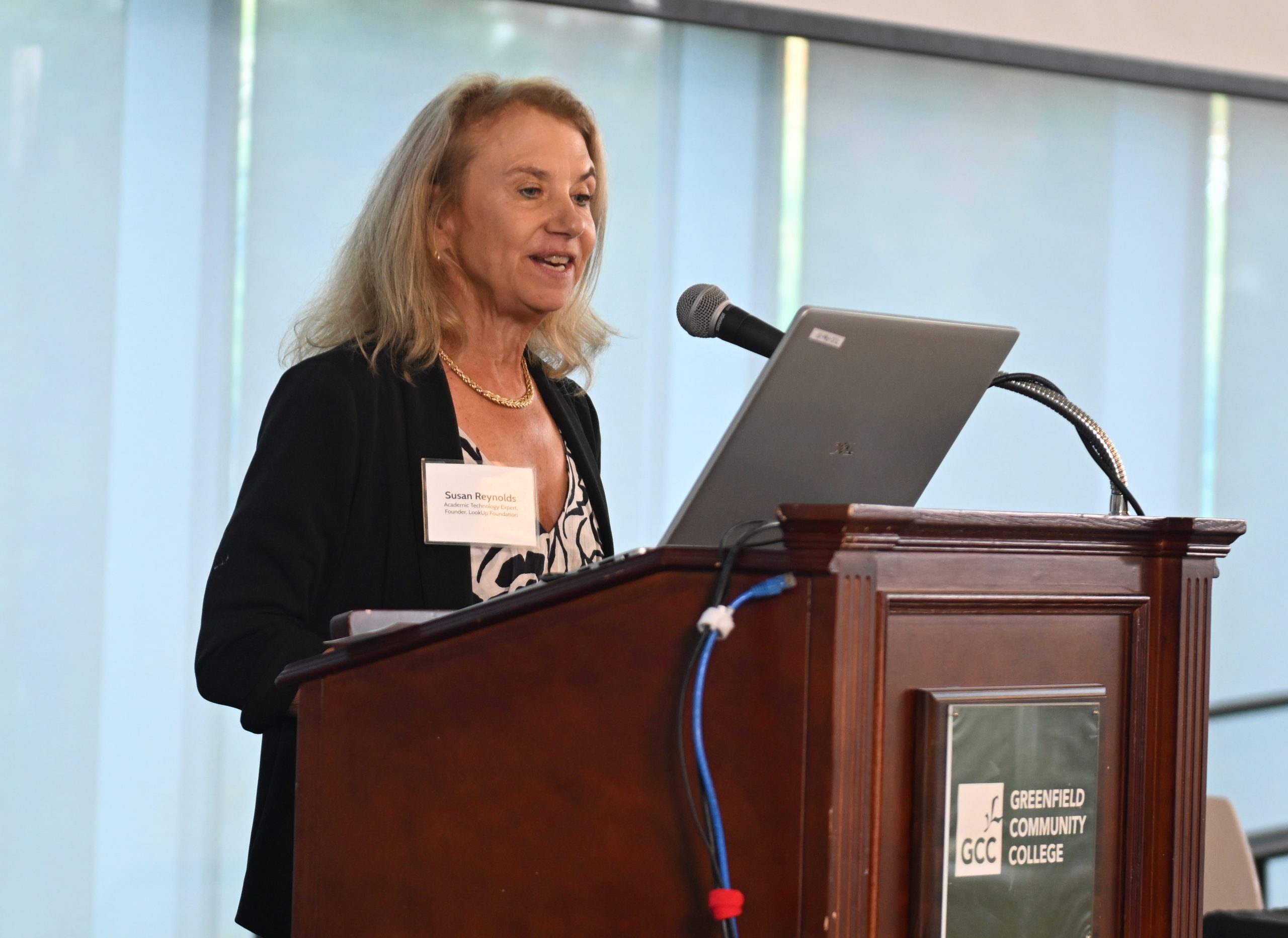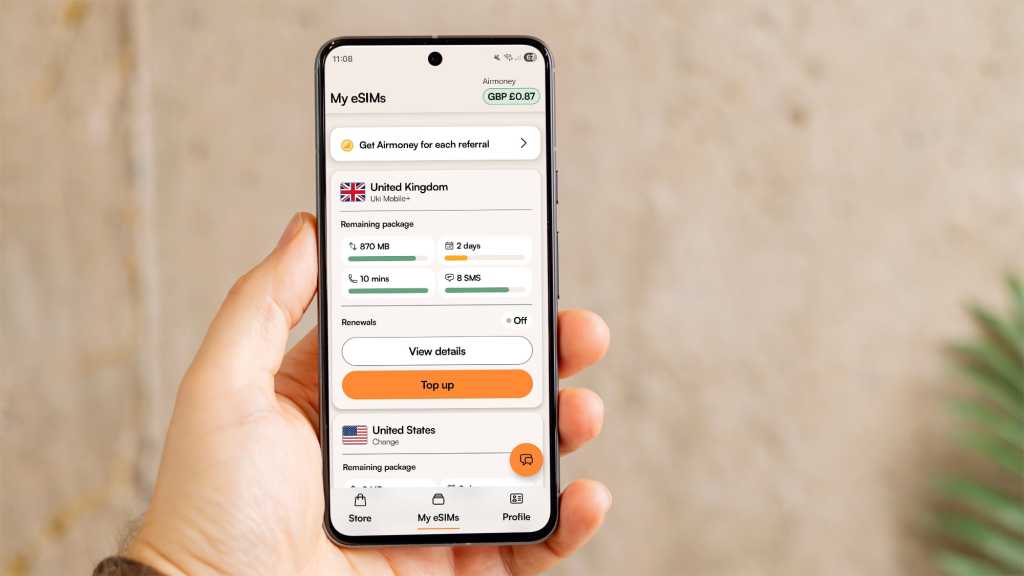GREENFIELD — School administrators and education officials from across the Pioneer Valley convened at Greenfield Community College on Wednesday to share their experiences with implementing cellphone bans, which speakers say have largely improved the learning environment.
The theme of the 11th Safe and Healthy School Summit, billed as “Schools in the Age of Digital Distraction,” focused on topics related to social media, cellphones and digital health in schools. It was organized collaboratively between the Northwestern District Attorney’s Office, the Children’s Advocacy Center of Franklin County and North Quabbin, and the Children’s Advocacy Center of Hampshire County.
Following lunch, six panelists offered their perspectives on cellphone usage and bans in public schools. Sheryl Stanton, superintendent of the Mohawk Trail and Hawlemont Regional school districts, said she took it upon herself to limit her own cellphone usage, cutting out “doom-scrolling,” compulsively consuming large amounts of negative news and distressing information. She said she has regained two hours of every day.
“And it’s very impactful,” Stanton noted.
Deputy Sheriff James Carmichael, of the Franklin County Sheriff’s Office and the Western Massachusetts School Task Force, addressed school policies requiring cellphones and other electronic devices to be out of reach. He reported parent concerns regarding their children’s ability to make emergency calls.
“I think all of us can empathize with that. I certainly can,” he said. “However, what we’ve seen in incidents that have happened is there are detriments to that. I want folks to be able to call 911 in the event that they have to — absolutely 100% agree with any parent on that — but for pretty much any foreseeable circumstance, there’s a phone in that classroom that we could call 911 with and … that landline phone on the wall is tied to a directly dispatchable location for us to get emergency responders there right away.”
Carmichael explained that a sudden surge in cellphone call volume during the 2013 Boston Marathon bombing led to a significant disruption in cellular service, which in turn impeded emergency response.

Melissa Gerry, who chairs the Pioneer Valley Regional School District Committee, said she has heard concerns from parents because their children often use their cellphones for schoolwork. But she explained it is a school’s responsibility to provide all necessary resources. She admitted that her own two children were not happy with the cellphone ban when it was implemented in the district and asked if she voted for it.
“And I had to say, ‘Well, not only did I vote [for this], I wrote this,’” Gerry said to laughter from the audience.
Gerry said, however, that her 10th grader has since admitted that the school runs much more smoothly with the policy. She added that when an administration implements a policy adopted by the School Committee, it removes one responsibility from teachers’ heavy workloads.
The panel also consisted of Lauren Hotz, principal at Hampshire Regional High School; Annie Scanlan-Emigh, principal at Pioneer Valley Regional School; and Mary Custard, dean of students at Amherst-Pelham Regional High School.
Discussion also included complaints about students not being allowed to use electronic devices during lunch. Scanlan-Emigh spoke of hearing from students who said phone usage alleviates the anxiety of not having a large social circle, but Custard said she has witnessed wonderful interactions during lunch.
“I see almost every table where the kids are … really having conversations. And because it’s still warm outside, kids are out in the courtyard throwing Frisbees, kicking soccer balls,” Custard said. “So if we go to banning cellphones, I don’t think it’s going to make that much of a difference at lunchtime. I’m happy to say that, but I do understand it is a distraction if people don’t have a lot of friends or … are shy. I’m happy to report that my kids have conversations at lunch and I don’t see a lot of phones unless they need to make a phone call.”
Keynote speaker Dr. Michael Rich, a pediatrician and director of the Digital Wellness Lab at Boston Children’s Hospital and the founder of the Clinic for Interactive Media and Internet Disorders, delivered a presentation titled “Raising Healthy, Smart, Kind Humans in the Age of Social Media and AI.” Copies of his book, “The Mediatrician’s Guide: A Joyful Approach to Raising Healthy, Smart, Kind Kids in a Screen-Saturated World,” were also available.
The summit also featured the talk titled “Mindfulness and Youth-Generated Approaches to Digital Pitfalls,” presented by Susan Reynolds, academic technology expert and founder of LookUp, an organization dedicated to empowering young people to think critically about their relationships with technology. She addressed the reasons it seems some children are hooked on social media feeds like TikTok and why the country has an “attention economy.”
Reynolds explained that 60-second social media videos reduce attention span and personalized content ignites the reward center in the brain in a way similar to an addiction. She said TikTok’s response to this includes allowing for longer videos, automatically disabling push notifications for users between the ages of 13 and 15 at 9 p.m., and reminding users to take a break, go outside or have a snack.
Reynolds said tech products are designed to keep people engaged for as long as possible. She also explained the phenomenon of nomophobia, the irrational fear of being without a mobile phone, and screen apnea, the tendency to hold one’s breath or to breathe shallowly when using a screen. This, she said, disrupts the body’s natural rhythm, increases stress, and is linked to poor mental and physical health over time.
She also noted that boredom has been shown to improve mental health, increase creativity and motivate the pursuit of new goals.



